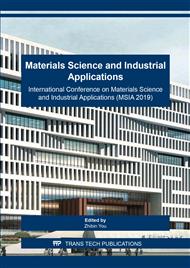p.80
p.88
p.95
p.101
p.115
p.121
p.127
p.133
p.141
Fretting Characteristics and Environmental Reliability of Au-Sn Contact Pairs
Abstract:
Based on the laboratory micro-motion contact resistance test system, fretting characteristics of the two contact pairs of gold-plated probe and tin-plated samples, gold-plated samples and tin-plated probe, is carried out at different plating thickness, contact force and temperatures. The contact pairs after the fretting experiment were subjected to temperature and humidity test and salt spray test to analyze its environmental reliability. 0.76μmAu-Sn has better fretting characteristics than 4μm Sn-Au. When the contact force is greater than or equal to 100 gf, the two kinds of contact pair exhibit good fretting characteristics. Thickness of sample plating is more important than that of probe. The influence of ambient temperature on fretting contact performance is the weakest. The increase of contact resistance of contact pair 4μm Sn-Au is higher than that of 0.76μmAu-Sn after accelerated environmental simulation experiments.
Info:
Periodical:
Pages:
115-120
Citation:
Online since:
May 2019
Authors:
Price:
Сopyright:
© 2019 Trans Tech Publications Ltd. All Rights Reserved
Share:
Citation:


